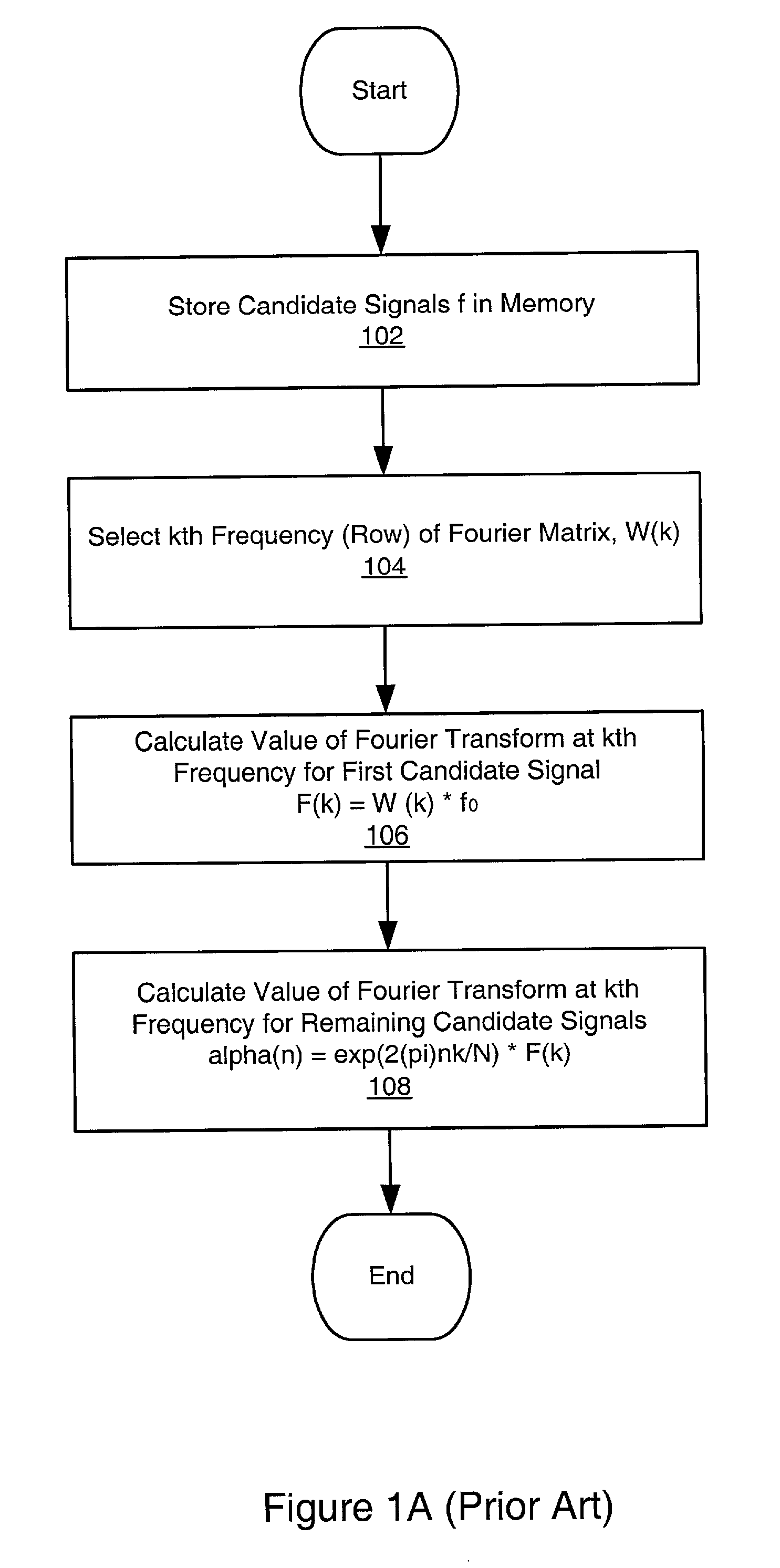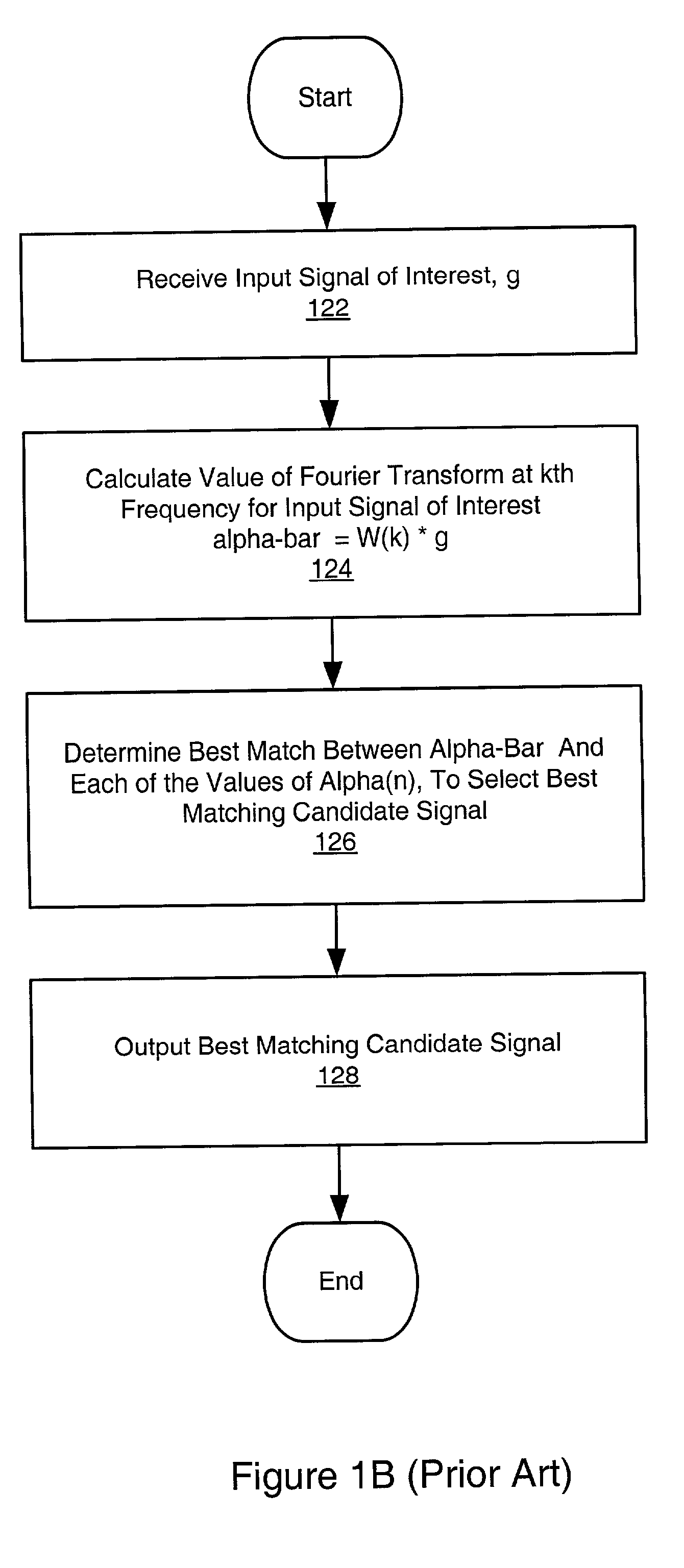System and method for signal matching and characterization
a signal matching and signal technology, applied in the field of system and method for signal matching and characterization, can solve the problems of inability to use and the difficulty in matching or characterizing the received signal, and the inability to determine fast, the method described in figs. 1a and 1b cannot be used
- Summary
- Abstract
- Description
- Claims
- Application Information
AI Technical Summary
Problems solved by technology
Method used
Image
Examples
Embodiment Construction
[0196] Assume we are given the following matrix 9 B = ( b 11 b 12 b 21 b 22 b 21 b 22 b 11 b 12 b 31 b 32 b 41 b 42 b 41 b 42 b 31 b 32 ) with ( is very small ) b 12 =( 1 + i 2 )b 31 + ( 1 - i 2 )b 41 b 22 =( 1 - i 2 )b 31 + ( 1 + i 2 )b 41 b 32 =( 1 + i 2 )b 11 + ( 1 - i 2 )b 21 b 42 =( 1 - i 2 ) b 11 + ( 1 + i 2 )b 21 b 21 = b 11 + b 41 = b 31
[0197] The two free parameters b.sub.11 and b.sub.31 are chosen in such a manner that B is regular. It can be shown that 10 A =B 'B - 1 = 0.5 (0 01 + i 1 - i 0 01 - i 1 + i 1 + i 1 - i0 0 1 - i 1 + i0 0)
[0198] which results in the Walsh-matrix 11 X B = 0.5 (1 1 1 1 1- 11- 1 1 1- 1 - 1 1- 1 - 11)
[0199] Example Applications
[0200] As mentioned above, there are many real-world applications for methods of pattern or signal matching. The following examples of pattern matching applications are intended to be illustrative, and are not intended to limit the scope or domain of applicability of the present method.
[0201] As noted above, an exemplary appl...
PUM
 Login to View More
Login to View More Abstract
Description
Claims
Application Information
 Login to View More
Login to View More - R&D
- Intellectual Property
- Life Sciences
- Materials
- Tech Scout
- Unparalleled Data Quality
- Higher Quality Content
- 60% Fewer Hallucinations
Browse by: Latest US Patents, China's latest patents, Technical Efficacy Thesaurus, Application Domain, Technology Topic, Popular Technical Reports.
© 2025 PatSnap. All rights reserved.Legal|Privacy policy|Modern Slavery Act Transparency Statement|Sitemap|About US| Contact US: help@patsnap.com



